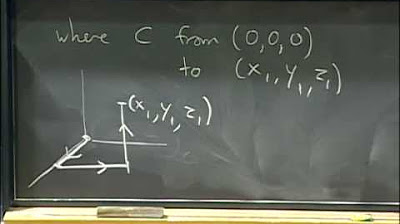In Da Club - Membranes & Transport: Crash Course Biology #5
TLDRThis video explains how cells regulate what substances enter and exit through their membranes. It distinguishes between passive transport like diffusion, which requires no energy as molecules flow down their concentration gradients, and active transport like pumps and vesicles that use ATP to move materials against concentration gradients. Examples given include aquaporins for water, the sodium-potassium pump in nerve cells, exocytosis of neurotransmitters, and endocytosis via phagocytosis, pinocytosis and receptor-mediated uptake.
Takeaways
- 😀 Cells, like nightclubs, need to be selectively permeable to function properly by allowing in necessary substances and excluding unwanted ones.
- 📚 There are two main categories for substance movement across cell membranes: active transport and passive transport.
- 🔬 Passive transport doesn't require energy, utilizing processes like diffusion and osmosis to move substances like water and oxygen into cells.
- 💧 Osmosis is a special type of diffusion for water, helping regulate cell water content by moving towards isotonic conditions, where solute concentrations are equal inside and outside.
- 🌊 Hypertonic and hypotonic solutions describe higher and lower concentrations of solutes outside the cell, respectively, affecting water movement to maintain balance.
- 🤖 Channel proteins, including aquaporins, facilitate the passage of water and ions across cell membranes without using energy.
- 🚀 Active transport requires energy, often ATP, to move substances against their concentration gradient, crucial for nutrient intake and waste removal.
- 🔌 The sodium-potassium pump, an example of active transport, uses ATP to maintain cellular electrochemical gradients, vital for nerve and muscle function.
- 🛠 Vesicular transport (exocytosis and endocytosis) is a form of active transport for moving large molecules or particles into or out of cells.
- 💊 Receptor-mediated endocytosis allows cells to selectively absorb molecules like cholesterol, highlighting the complexity and specificity of cellular transport mechanisms.
Q & A
What are the two main categories of how materials cross the cell membrane?
-The two main categories are active transport and passive transport.
What is the process called when water moves across a cell membrane from an area of low concentration to an area of high concentration?
-When water moves across a cell membrane from low to high concentration, it is called osmosis.
What is the term used when a solution has a higher concentration inside a cell compared to outside?
-When a solution has a higher concentration inside a cell compared to outside, it is called hypertonic.
What protein allows ions and water to pass through a cell membrane without using energy?
-Channel proteins allow the passage of ions and water through a cell membrane without using energy.
What kind of transport protein moves sodium ions out of a cell while moving potassium ions in?
-The sodium-potassium pump moves sodium ions out of a cell while moving potassium ions in.
What Danish scientist discovered the sodium-potassium pump while studying crab nerves?
-Jens Christian Skou, a Danish medical doctor, discovered the sodium-potassium pump while studying crab nerves.
What molecule does a cell break down to provide energy for active transport?
-A cell breaks down ATP (adenosine triphosphate) to provide energy for active transport.
What is the process called when a cell transports material outside of itself?
-When a cell transports material outside of itself, it is called exocytosis.
What type of endocytosis involves a cell engulfing and destroying pathogens?
-Phagocytosis involves a cell engulfing and destroying pathogens.
What mechanism allows cells to absorb molecules that only occur in low concentrations?
-Receptor-mediated endocytosis allows cells to absorb molecules that only occur in low concentrations.
Outlines
😊 Introducing Cells and Cell Membranes While Waiting in Line
The video host is waiting in line to enter a club and compares cells to nightclubs, explaining how cell membranes are selectively permeable to let in needed substances like oxygen and water while keeping out unwanted substances. The host introduces the concepts of diffusion, concentration gradients, and types of solutions based on concentration relative to cells.
🚶♂️ Using the Sodium-Potassium Pump to Actively Transport Against Concentration Gradients
The host gives an analogy of himself moving through a crowded club to get to his friends to explain active transport, which cells use to move substances against concentration gradients. He introduces ATP as the energy currency for cells and discusses the sodium-potassium pump, which uses ATP to pump sodium ions out of the cell against the concentration and electrical gradients.
🛳 Using Vesicles for Transport and Communicating Between Cells
The host discusses vesicular transport for moving materials in and out of cells, including key examples like neurotransmitter release and phagocytosis. He reviews the main forms of transport across membranes covered in the video.
Mindmap
Keywords
💡diffusion
💡concentration gradient
💡osmosis
💡active transport
💡ATP
💡sodium-potassium pump
💡vesicular transport
💡cytosis
💡phagocytosis
💡receptor-mediated endocytosis
Highlights
First significant research finding
Introduction of innovative methodology
Key conclusion from analysis
Transcripts
Browse More Related Video

ATP & Respiration: Crash Course Biology #7

11. Cells, the Simplest Functional Units

Glycolysis Made Easy!

Passing Gases: Effusion, Diffusion, and the Velocity of a Gas - Crash Course Chemistry #16

Cellular Respiration (UPDATED)

Lec 30: Line integrals in space, curl, exactness... | MIT 18.02 Multivariable Calculus, Fall 2007
5.0 / 5 (0 votes)
Thanks for rating: